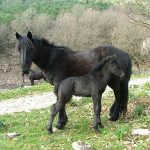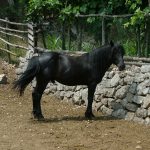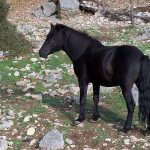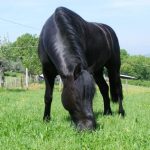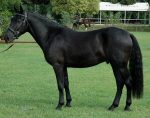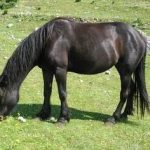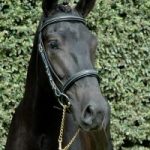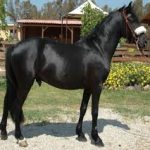Esperia Pony
The Esperia Pony, originating from the Italian province of Frosinone, Lazio, is a breed of robust and lively ponies known for its horse-like big stride and use in equine sports. These ponies can adapt well to its native environment, as they are tolerant of heat and cold, capable of surviving without water for days.
Esperia Pony Pictures
- Esperia Pony Foal
- Esperia Pony Images
- Esperia Pony Pictures
- Esperia Pony Stallion
- Esperia Pony
- Pony dell’Esperia
- Pony d’Esperia
- Pony di Esperia
Quick Information
| Other Names | Pony di Esperia, Pony dell’Esperia |
| Temperament / Personality | Docile, lively, cooperative; calm and steady if trained |
| Physical Characteristics | Short head, straight profile; proportionate, medium-sized neck; well-developed, muscular chest, robust legs, strong and clear joints, abundant mane and tail |
| Colors | Black |
| Height (size) | 13-14 hands (52-56 inches, 132-142 cm) |
| Weight | Unknown |
| Common Uses | Riding pony, pack and show animal |
| Health | No known health concerns specific to the breed |
| Popular Traits | Strong constitution, high versatility and hardiness, frugal eating |
| Feeding/Diet | Low-sugar hay, grass, vitamin and mineral concentrates |
| Country of Origin | Lazio region, Italy |
| Ancestors | Turkish horses |
| Breed Registry/Association | Associazione Provinciale Allevatori di Frosinone |
Video: Esperia Pony Show and Riding Animal
History and Development
These ponies evolved as a result of a selective breeding program that was undertaken by the Baron Ambrogio Roselli di Esperia. In order to improve the local horse and pony population, several Italian horses including the Salerno stock were added. However, these animals failed to adapt to the harsh conditions of the Aurunci and Ausoni Mountains. In 1840, Roselli bought 4 Turkish mares and a stallion, which adapted well and integrated into the local horse population.
The Esperia ponies developed and thrived, but since the Second World War, their numbers started declining, as they were extensively used as a source of meat as well as by the military for setting off mines. They got official recognition in 1962, and the breeders started producing these ponies at many places in Italy. A breed standard was also adopted in 1993.


